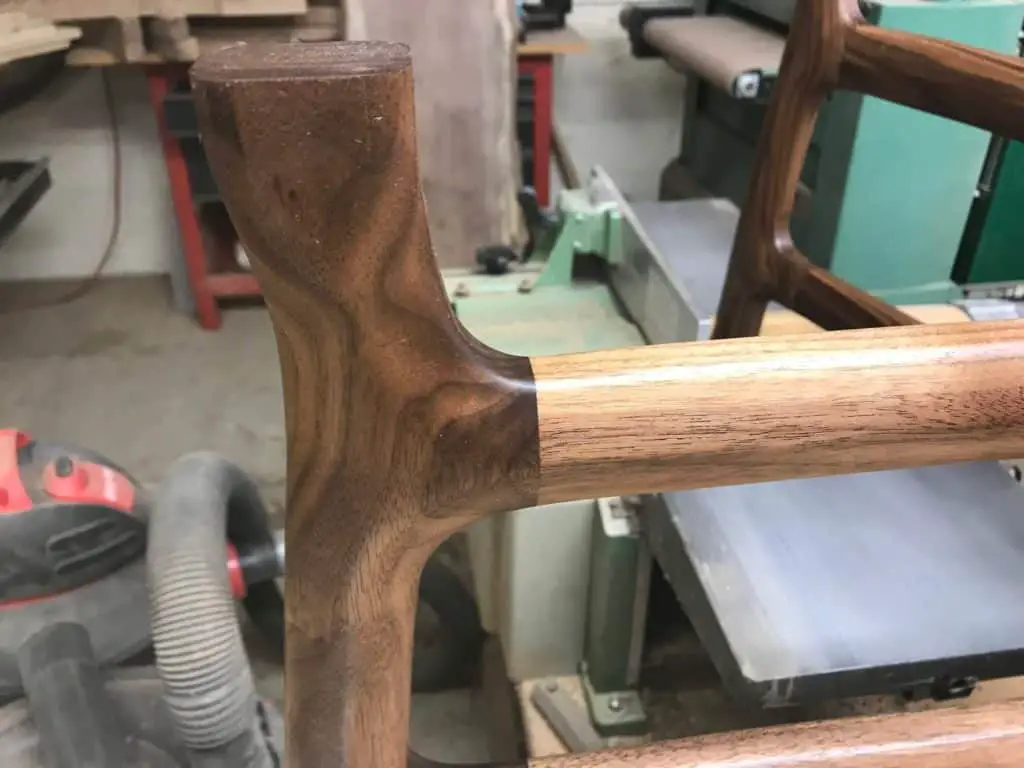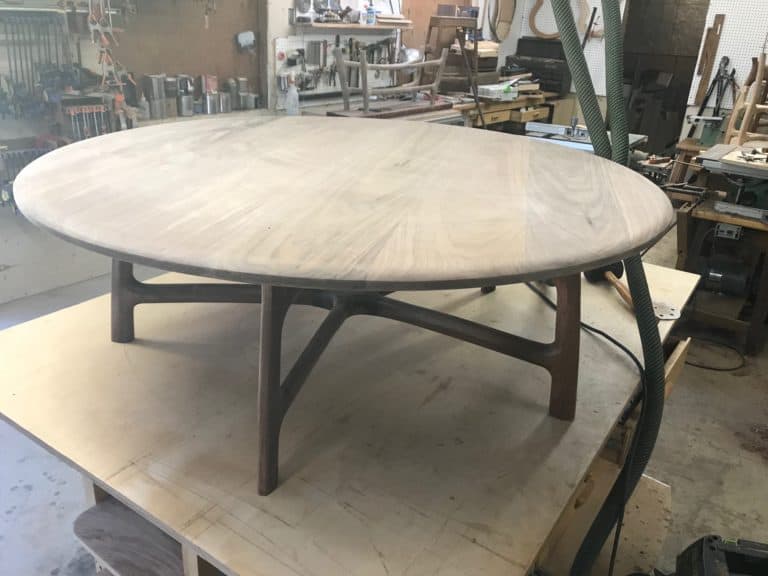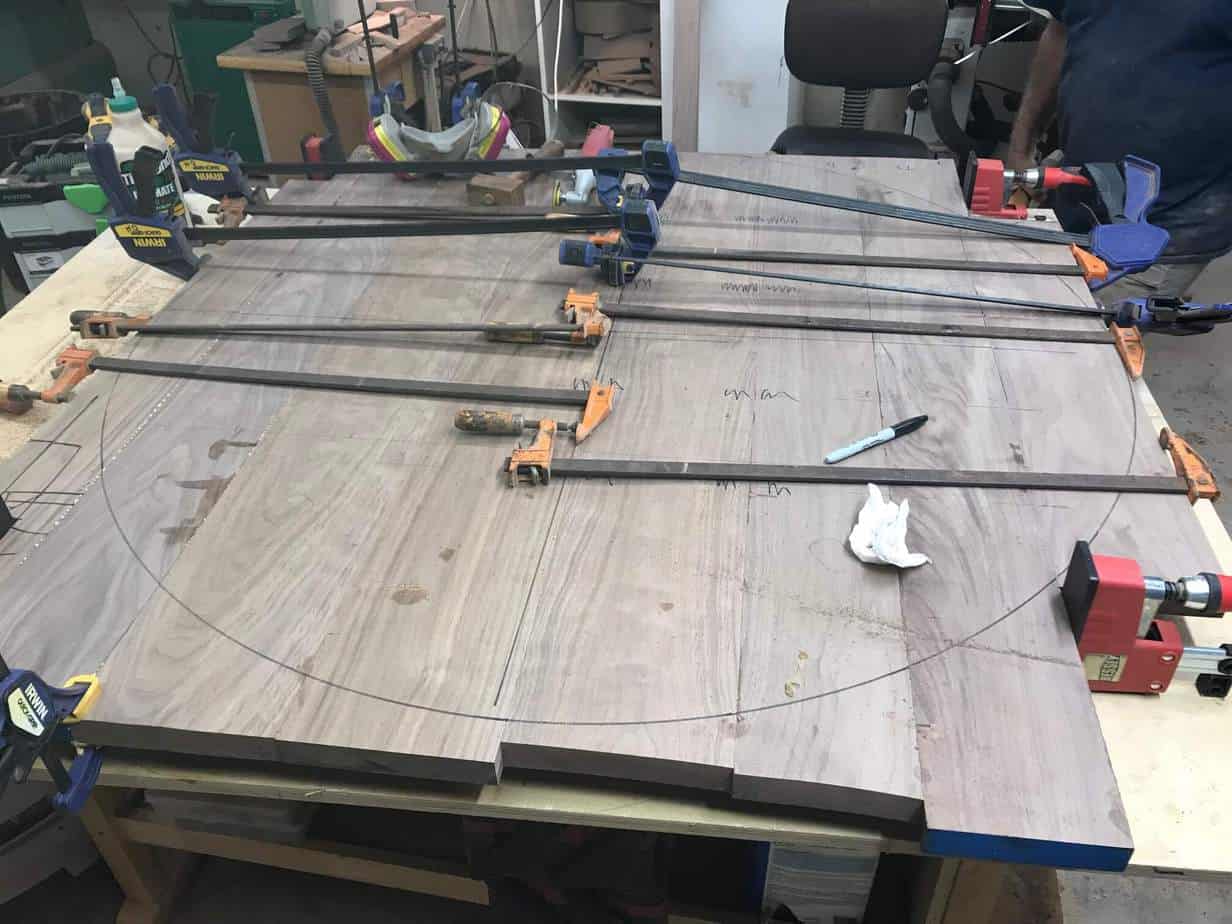If you are considering raising your wood working game and working with one of the more beautiful hardwoods than black walnut is what you want.
Black Walnut wood is one of the most versatile and beautiful types you can use for a woodworking project. It cleans up nicely and whatever you make from walnut lasts forever. Its mostly non toxic, has great grain patterns, and is a good wood to work with.


Is Black walnut expensive?

Black walnut averages about $7 to $12 a board foot depending on location making it about twice the cost of maple and cherry. The cost of the walnut wood alone for a 48 inch round coffee table is about $450.
How good is black walnut?
The black walnut tree is not only treasured for the healthy nuts it produces but also for the quality wood it offers. It presents an appealing dark wood ideal for a variety of woodworking, from hardwood flooring to furniture.
It might not be the best hardwood option available, but it proudly stands among the best. Black walnut is readily available in most parts of the Northern United States and parts of Canada.
With availability in many parts, it is considered very sustainable with no worry of depletion or extinction. Unlike most other hardwood options, black walnut is relatively easy to work with. However, its use on most items is somewhat limited by its expensive cost.

Black Walnut Characteristics
This species is also known as the Eastern black walnut or American walnut. It has the following characteristics and features that set it apart from other hardwoods:
- Appearance: Black walnut, like its color stipulates, has a rich and dark color variation. However, depending on the wood extraction location, the color varies slightly. The heartwood extracted from the center of a log has a pale brown or dark coffee color with a purple or gray tint. The sapwood or the outer wood’s color ranges from yellowish gray to off-white. The color variation between the heart and the sapwood is usually steamed to gives an appealing uniformity absent in most other hardwoods.
- Grain:
Apart from the color variation, black walnut wood comes with a variety of grain patterns. The most common are thin and straight though they can be wavy and curling. Other patterns can be knotted, with checks, piths, mineral streaks, or splits. Such imperfections alongside the narrow trunk diameter account for the narrow sized planks. - Character Grade:
If you are looking for a uniform appealed wood, black walnut might not be the best option. However, this is among the best options available for natural patterned woods. This character grade offers an appealing rustic look that will arguably match wooden floors or furniture. - Burls
Black walnut offers quality burls that are a favorite for most woodworkers. These burls flaunt not only impressively unique grain patterns but are also very resistant to splits. Using walnut burls is quite costly; hence they are mostly used to make veneers and inlays. - Durability
Black walnut is moderately hardwood; on the Janka scale, it is has a rating of 1010. Compared to other hardwoods such as maple or oak, it is way softer hence the need to handle it carefully. However, it is still among the most durable wood options available. It is fairly resistant to decay and warping, making it ideal for both indoor and outdoor applications. Even better, it takes is easy to finish.has
Differences between different types of walnut
There are four types of walnut trees, but only three do well in Northern America. The four types include the following:
• English Walnut
Scientifically know as Juglans regia, this is the only type of walnut commercially planted for the delicious seeds edible seeds it produces. In its natural habitat, this tree can grow to between 82 and 115 feet in height with a trunk that can be as wide as six feet in diameter. It grows well in foothills or regions with a high water table. Its wood is ideal for making furniture.
• California Black Walnut
This type of walnut grows to a maximum of 49 feet in height and majorly serves as an ornamental tree. It does well in moist, well-drained soil in a sun-exposed environment. It is found in most valleys, slopes, and woodlands of California with suitable conditions. California black walnut flaunts a grayish-brown bark with yellow-green foliage. Its drought and disease resistance makes it a rootstock for more susceptible species, such as the English walnut.
• Northern Black Walnut
Scientifically known as Juglana California var.hindsii, this tree is natively found in California. It is a drought-resistant species that thrives in plenty of sunlight. It grows to a height of between 30 and 60 feet. Its most notable feature is its thick-shelled nuts. Northern black walnut is mostly grown as a shade tree or a rootstock for the disease and drought susceptible English walnut.
• Hinds Black Walnut
This tree is scientifically known as the Juglans hindiis. It is a large tree that can grow up to a height of 75 feet. It is mostly found in Northern California in Walnut Creek and Contra Costa Country. Hinds black walnut produces not only good furniture but is also used for aesthetic purposes along highways and streets.
Common finishes used for walnut
It is no secret that finishing walnut can be quite a hustle. The wood is known to be temperamental to finish; hence it needs more than just applying a stain or polyurethane. If poorly done upon aging, pieces of wood finished with Tung oil or linseed oil acquire an unappealing grayish pallor than can compromise the aesthetic of your floor or furniture.
The most common finishing for black walnut wood includes the following:
• Lacquer
This arguably the best finishing option for black walnut. It is not only user friendly but also dries impressively fast. Even better, you only need to apply a double coat to seal and protect your wood. You can apply lacquer using a pressurized spray or airless equipment. The process entails the following:
• Fill the spray equipment with enough lacquer
• Hold the spray about eight inches from the walnut wood at a 30-degree angle
• Spray evenly on the wood to produce a uniform coat
• Let it dry for about 30 minutes.
• Sand the wood with sandpaper
• Spray a second coat on the wood
You are not limited to two coats; you can add up to the forth coat if you want a deep lacquer finish. Sanding is only required after the first coat.
• Linseed Oil
This takes longer but offers the most waterproof finish you can ever need. Linseed works by penetrating into the pores of the walnut wood and hardening accordingly. To process of finishing with linseed include the following steps:
• Sand the wood to smoothen
• Wet the surface of the wood with a cloth saturated with linseed oil
• Let the oil penetrate for about 30 minutes and then wipe it off
• Repeat the process after 24 hours
• Repeat the action about once after six months after the first application to keep the wood finished and protected in the long term.
• Shellac
This is another finishing option for walnut. It provides the perfect base upon which a gel stain or a glaze can be added to pull off an impressive finishing. Even better, it can be mixed with colorants to give black walnut a bright feel. Its application process entails the following:
• Apply a shellac coat and allow it to dry for several hours
• Hand sand with fine sandpaper to level the surface
• Vacuum to blow off the sand residue
• Apply another coat of shellac or an appropriate gel stain
Comparisons with other Hardwoods
Comparison with Other Hard Woods
There are lots of dependable hardwood options available for a variety of woodworks. This is how the major hardwoods compare to black walnut:
• Rock Maple/ Hard Maple
This is the palest and lightest of the major hardwoods. Its heartwood’s color ranges between dark brown and reddish while the sapwood flaunts an off-white or creamish color. Its texture is relatively fine, and even its grain is outrightly straight to wavy.
• Red Oak
This is another hardwood option that goes head to head with black walnut but is considered a superior option. It flaunts a pinkish to reddish heartwood and a white to light brown sapwood. It has a coarse texture, and the grain is relatively straight.
• American Cherry
American Cherry is widely popular for its unique pink and red hues. Its most outstanding features are its photosensitive heartwood that turns from light pinkish-brown that turns to golden brown when exposed to light. The sapwood is pale yellow while its grain is straight with a fine texture. Another notable feature is the wavy growth rings, which sometimes form swirls.
Black Walnut Uses
The durability of black walnut places it in the list of the best hardwoods available for multiple woodworks. It is categorized alongside chestnut, black locust, and even cedar. Due to its outstanding characteristics and features, black walnut can be used for several functions. Among the many functions, it can be used to make:
• Furniture such as bookcases, desks, tables, office furniture
• Millwork
• Flooring
• Cabinets
• Interior decoration
• Gunstocks
Black walnut is further considered among the best woods for shaping and turning. Even after seasoning, it holds its shape perfectly well and can be dried easily even with a moderate kiln. With its straight grain, black walnut is also easy to work with and finished beautifully to produce equally beautiful wood products.
Is Black Walnut Sustainable?
Black Walnut is relatively sustainable with sources such as Indiana, Ohio, and the neighborhood accounting for most production. The trees are not endangered, but the numbers are fewer than in the past, considering most walnut trees take up to 100 years to mature.
Sustainability is further upheld by the strict regulations that prevent deforestation. Even better, the products very durable, ensuring you do not have to keep going back to the store to buy after a short time.
The Benefits and drawbacks of Walnut
Like other types of wood, black walnut comes with a fair share of both benefits and drawbacks.
Benefits of Black Walnut
Some of the benefits you are bound to enjoy can be reflected in the following:
• Tight Grain
Black walnut offers a tight grain that provides a uniform appeal. Consequently, it is easy to get matching pieces that combine perfectly to pull off a cohesive look. Even better, the uniform and aligned grain offer a variation in tone, between light and dark hence giving it a rustic appeal that is quite epic. If you are looking to install traditional décor to your home, black walnut flooring will match perfectly with your décor.
• Easy to Stain
Staining black walnut is an effortless endeavor that does not demand much. After selecting the preferred stain for your wood, you just apply and given enough time; it dries easily to pull off an aesthetically appealing look.
• Easy to Maintain
If you choose black walnut flooring for your home, the maintenance efforts will be limited. Its relatively dark color makes it hard to spot dirt and dust particles, reducing the need to clean your home many times. However, it is advisable to clean and vacuum accordingly to prevent the accumulation of such particles since the cleanup exercise is very easy. The floor can also be treated with light oil or waxed for a quick clean up. To keep off unwarranted issues, it is advisable to clean regularly and reseal the floors after a few years.
• Adds Value to a Home
If used in a home as interior décor or flooring, the home’s value goes up significantly. Like other hardwoods, it is considered luxurious and stylish. Consequently, if you choose to sell your home, its value will increase due to such qualities.
Drawbacks of Black Walnut
Black Walnut Drawbacks
Black walnut also flaunts several drawbacks that you will undoubtedly not like. Such include:
• High Cost
The reason why most woodworkers and homeowners avoid black walnut is its expensive cost. Compared to other hardwood options, it is relatively more expensive for a native species. If used for flooring purposes, there are other cheaper options such as ash, cherry, American oak, and maple. In such an engagement, only the Brazilian walnut is more expensive than black walnut. It might increase the value of your home, but it demands a heavy upfront investment.
• Hardness
Black walnut ranks low in the hardness scales compared to other hardwoods such as American cherry, red oak, yellow birch, maple, white oak, and ash. It rates at 1010 on the Janka scale. Some such as Brazilian cherry and Santos mahogany have a ratting almost double that of black walnut.
With such infomation, it is easy for homeowners to determine whether to use the black walnut when building items. Also, one can easily advise other homeowners if they need personal reviews when building stuff.

